What is a PA system? Learn more about the Type of Public Address System You’ll Want
When it comes to public address system components, there are a few details you want to keep in mind, but before we get to that, let’s first get the most basic piece of information out of the way. For those who aren’t certain, PA stands for public address system. You’ll hear it referred to both ways.
Another thing to understand is a PA system isn’t a one and done kind of thing. There are different types of systems, components, and details you’ll want to consider. In a moment, we’ll break down the difference between things like all in one PA systems, modular PA systems, along with traditional systems.
First, it’s essential to understand how a system works and what you’ll need to know before setting one up. You probably don’t remember the days of needing to use a megaphone to announce something, which was an upgrade from yelling those details out.
But with advanced technology, a system was created to help broadcast your words and music louder and easier. That’s the PA system we’re all used to.
What you need to know about Public Address System Components
There are a few main pieces to a PA system. The fancy word is components, but basically, it just means the parts that make up the entire thing.
The main components of a public address system are:
- Speakers – main speakers, subwoofers, and monitors
- Amplifiers – Needed only if using passive speakers
- Audio Mixer – Analog or Digital
- Speaker Processor
- Microphones – Dynamic or Condenser
- Effects – only used if needed
- DI Box – Direct Injection Box
- Cables and Accessories.
Here is a good analogy to explain the concept. So, if you’re making a grilled cheese sandwich, the components would be bread, cheese, and butter. You still need to put the pieces together and cook them, but they are the ingredients you need to build your sandwich. It works the same way with a PA system. You need different parts that you’ll hook together to make it work.
Each piece plays a role in how the PA system works. We’re not going to get into precise details on picking out each of these things in this article. Instead, let’s stick with the basics, so it all makes sense when you start looking into this on your end.
When it comes time to hook up a PA system, you’ll want to read this article about setting up a stage sound system, as it digs into more in-depth detail. Still, it doesn’t make sense to get confused before that.
It is smarter to understand the basics. Once you have a foundation of understanding, it’s easy to go from there. The most significant element of hooking up a system is making sure things flow the right way.
Different Types of Public Address Systems
Okay, so you know that a PA system is also called a public address system. You’ve learned that different components go into setting up a system. Now, let’s look at the different types of systems you can choose from. Knowing about the three basic types will help you decide what will work best for your situation.
The three basic types of PA Systems are:
- All in One packaged PA system
- Modular PA systems
- Traditional systems (note the components needed, just like we mentioned above: speakers, amplifiers, mixers, microphones, etc.)
All in One packaged PA system
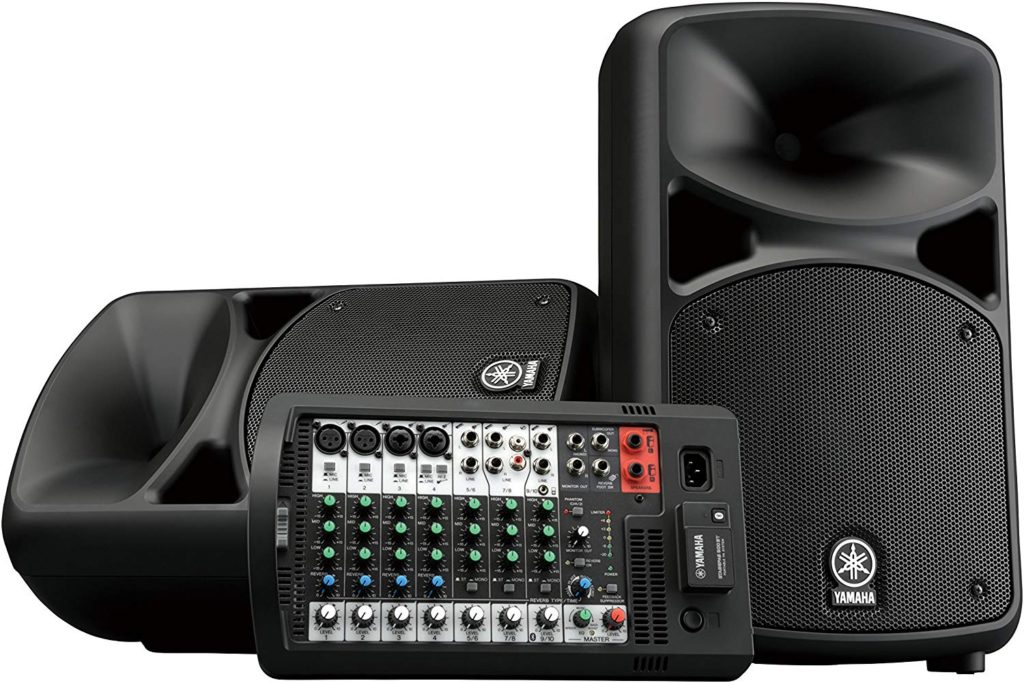
If the thought of putting all the pieces together overwhelms you, a perfect choice would be the all in one package. This way, you don’t have to know if this piece works with that one, because they’ve done the work for you and sell it all together. It’s convenience at its best.
One of the benefits here is that they can usually package a pretty nice deal when it comes to cost since it’s preset.
Here are a few examples of some of the best all in one packaged pa system (links to Amazon):
- JBL Professional EON208P
- Fender Passport Event PA Speaker System
- Yamaha Stagepas Portable PA System with Bluetooth
- Peavey Escort 5000 Portable PA System
Modular PA systems

What about modular PA systems? Say you’re a one-person band and set up your equipment at different gigs. You move around a lot and need something quick, portable, and easy to use.
Consider a modular system if you want something that breaks down quickly, and you aren’t in search of ultrasonic superpowers!
Here are some examples of some of the best modular PA systems available in the market today (links to Amazon):
Traditional systems
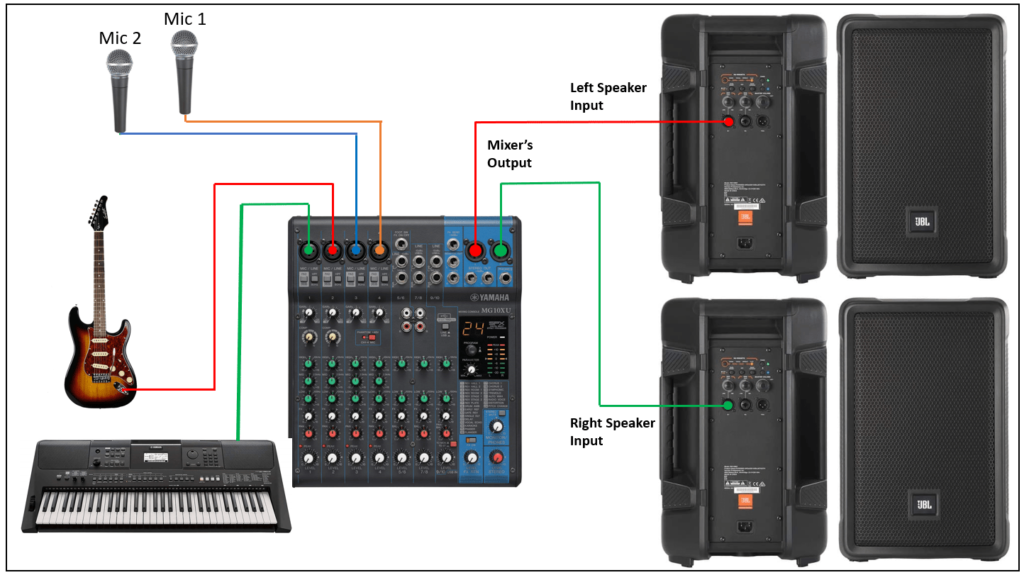
The traditional PA systems are a good choice if you love to get into the details of picking out just the right piece of equipment. If you’re going to geek out on the experience of selecting and comparing each component, then this is for you.
In a traditional PA system, you buy all the components separately and then connect them together.
You’ll also want to keep in mind that usually traditional PA systems are easier to expand if you need more power and control over your setup.
There you have it, a basic list of needs, the different types of systems, and a basic understanding of PA systems.
If you want to dig deeper into the components that make up a public address system, keep reading as I explain in more detail. Plus I have included block diagrams and wiring diagrams of passive and active PA systems that can help you visualize the concept.
READ: 6 tips for choosing the best portable pa system for live music
READ: Best Portable PA Systems For Outdoor and Indoor Events
What do I need for a PA system?
As mentioned earlier, the components you need for PA system either for the spoken word or live music are:
- Speakers – either active or passive
- Amplifiers – Needed only if using passive speakers
- Audio Mixer – Analog or Digital
- Speaker Processors
- Microphones – Dynamic or Condenser
- Effects – only used if needed
- DI Box – Direct Injection Box
- Cables and Accessories.
I don’t know about you, but sometimes learning something new can be confusing and frustrating when things are thrown at you all at once. It becomes information overload. Hopefully, by breaking down things to a fundamental level, you’ll have a solid foundation of useable information that you can build on.
When it comes to a public address system, components come in a few different types and pieces. Instead of digging into all of them at once, let’s first take a closer look at first component, speakers.
Speakers
Loudspeakers come in a lot of varieties, can be active or passive, and have different names. In the next part of the article, we’ll break down the rest of the pieces you’ll want to know about. For now, let’s focus on speakers.
One of the most important elements of your public address system is the speakers that you’ll use.
Speakers can be both active or passive. But what does that mean?
Active speakers have an amplifier in them, which means you don’t need to buy that extra piece of equipment. Passive speakers mean there is no amplifier in them, and you’ll need to add an amplifier to make it work.
Simple enough, right? But why would you want to choose one over the other? It comes down to how you’ll be using the system, pricing, and how much control you want over your system.
I wrote an article dedicated to the Differences Between Active and Passive Speakers, their Pros and Cons, so that you can have a full understanding of the concept.
Depending on your set up, you will use three types of speakers. They are your main speakers (also called tops), your subwoofers, and monitors. In a simple setup, you only need the main speakers.
Main Speakers (Tops)

When it comes to your main speakers, it’s going to come down to how loud they are, their frequency response, the size, shape, weight, and materials used to build them, which also play a role in their sound.
The first thing to consider is what you will be using the speakers for?
Speakers move air with vibration. This creates sound. There’s a bunch of science behind it, but let’s keep this basic. You’ll want to know how far you need your sound to travel, and what type of space you’re in. You’ll also want to know how loud the speaker needs to be to cover the area. This measure is called SPL (Sound Pressure Level)
You can always add a subwoofer if needed to extend your low range, but before going there, figure out your actual needs. With distance, there is sound dispersion, which means the dB levels will get lower the farther away the sound needs to travel. The suggestion is to set these speakers up at shoulder to head level for better sound dispersion.
If you feel overwhelmed with all the details I have talked about in this section, don’t worry, I have dedicated a full article to explain what SPL means in audio and also an article explaining why wattage in a speaker system doesn’t define how loud the system is. The links for those articles are below.
READ: What is SPL in Audio
READ: Speaker Wattage Explained
READ: How to Position PA Speakers
Subwoofers
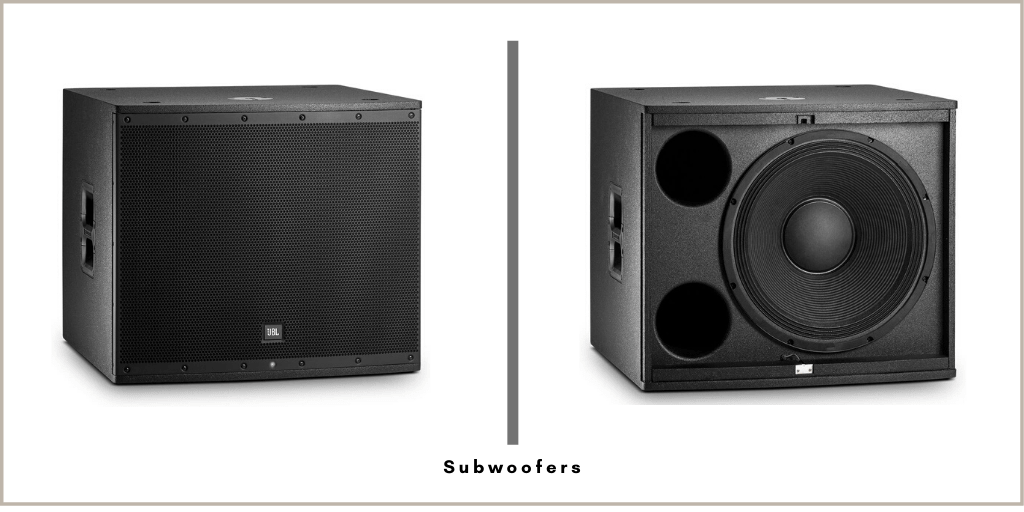
Subwoofers extend your range, sort of. Subwoofers help with low-frequency sounds. Think bass and some drum sounds. They have a very heavy vibration. These can complement your main speakers and help distribute the sound if needed.
It will depend on how you’re using your PA system. Consider a one-person acoustic guitar singer probably won’t need to go that route. Still, if you play heavy rock, subwoofers will most likely be part of your system.
One other interesting thing to note is that some PA systems have these built-in. It’s going to depend on the size of the PA system you need, and what you’re using it for.
Monitors
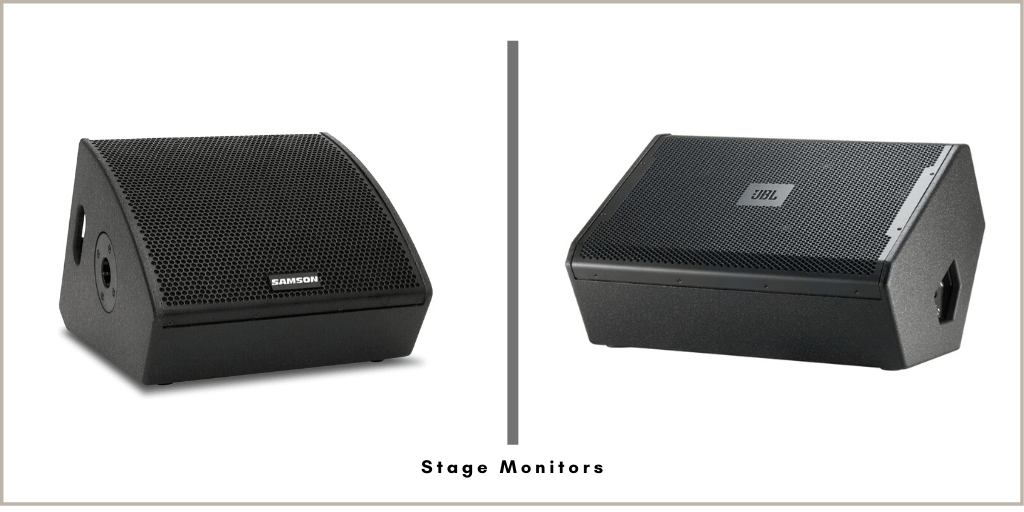
Monitors are usually speakers that are for the band or entertainer’s use. These are smaller and typically face the band. It helps provide a sound reference, as generally most of the sound from the speakers is going away from them.
In very noisy situations, it can be hard to hear yourself or the band on stage without monitors. These are a simple fix to streamline your process. They are generally placed on the floor and are an option that allows the band to skip expensive in-ear monitoring systems.
Each type of speaker plays a role when it comes to the public address system. Components come in varying types, but by knowing how you’ll be using them, what range you’ll need, and what type of sound you’re looking for, you’ll be able to pick out the best speakers for your PA system.
READ: How to Set Up Stage Monitors
Amplifiers

Amplifiers increase sound. They quite literally boost the signal before sending it out through the speaker. Remember, some speakers (active) come with amplifiers in them. For this instance, we’re going to talk about a standalone amplifier.
If you have passive speakers, you’ll need an amplifier to power them. Consider how big of a venue you’re in, and how much power you’ll need. It’s important to know this so that you don’t end up with distorted sound.
Audio Mixers – Analog or Digital
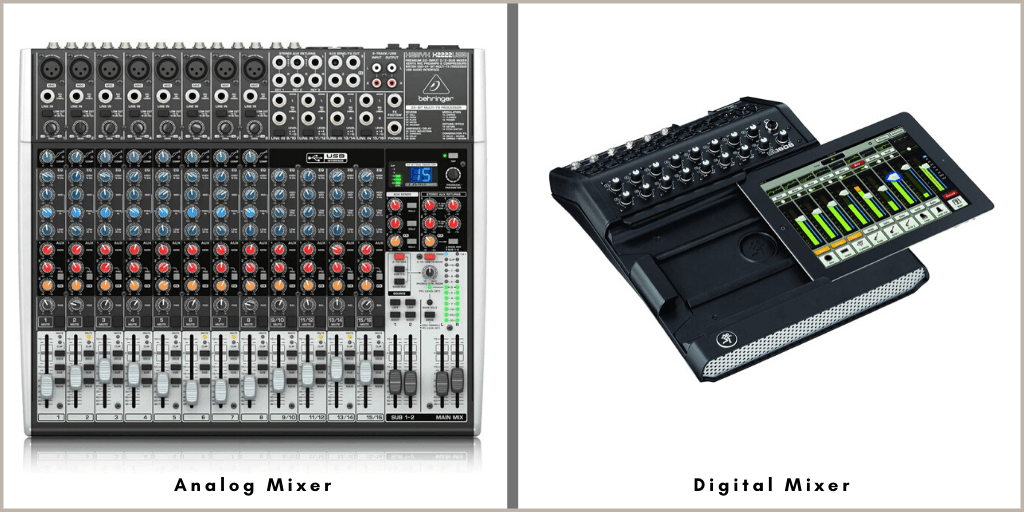
When it comes to mixers, they act as the brain of your system. Sound signals go into it (inputs), signals are manipulated, then come out of it (outputs).
Mixers can look a little intimidating when you first see them, but just know that each knob or button does its part in getting the sound to come out at your preferred level. It creates a highway system. You take the signal from one place and send it off into another (ex: your speakers).
We’re not going to delve into this deeply, because I dedicated a full article about the types of audio mixers. You may have heard that there are two types of mixers, one is digital, while the other is analog.
A digital mixer may have preset effects, and with a push of a button, put things together for you, save settings, and so on. If you want more serious control of each sound, analog means it has a “do it yourself” vibe. One of the benefits of an analog mixer is the lower cost and ease of use.
READ: Mixing Console Basics
Speaker Processors – PA Speaker Management System
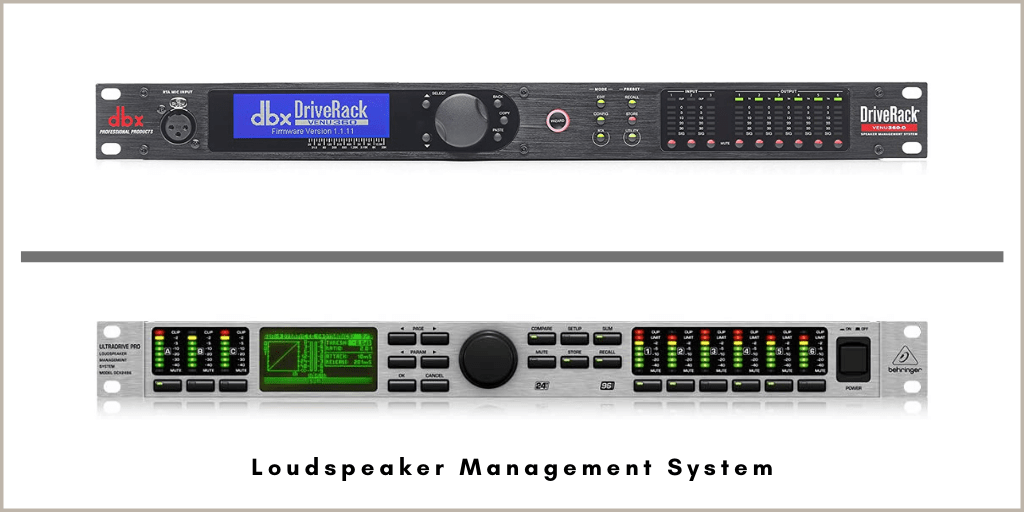
Another important public address system component is a loudspeaker management system. As explained in the Crutchfield website, a speaker processor or PA management system is a type of signal processor that is connected between the mixing console and the amplifiers of a passive PA system or powered speakers.
It combines many features but one of the most important ones is that it acts as a crossover to divide the incoming signal into highs, mids, and low frequencies.
A speaker processor becomes very useful if you have a passive PA system setup as it can help with signal routing function in large multi-speaker systems. It gives a lot of control over the system, plus it also protects your speakers from the damage that could be caused by sudden feedback.
Other helpful features provided by a PA speaker management system are audio compression, limiter, and equalizer.
Microphones
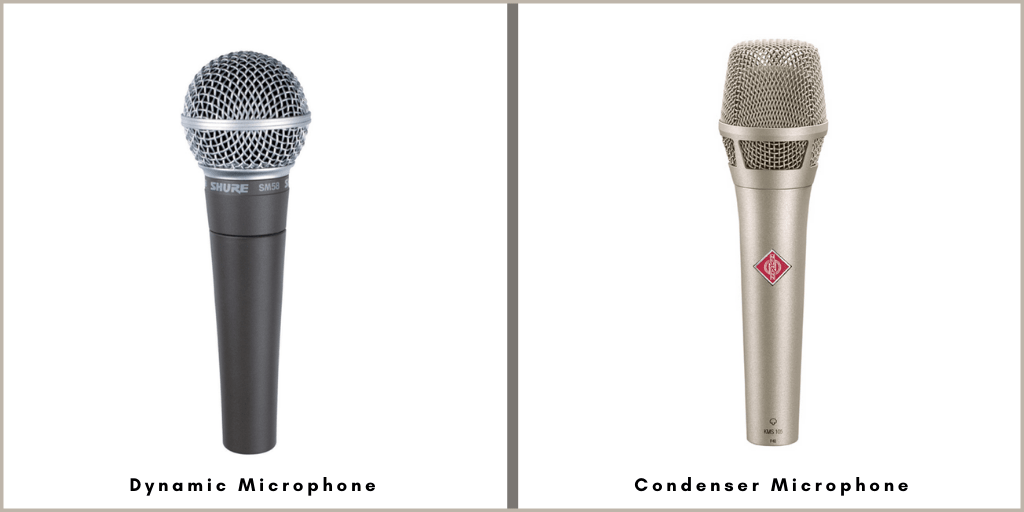
Most people know what microphones are, but there are a few things to consider when talking about microphones. You’ll want to know the type of polar pattern and frequency response of the microphone you’ll be using.
Another thing to consider is if you want a condenser or a dynamic mic. In most circumstances, you’ll probably look at a dynamic mic, unless you need your microphone for particular scenarios where you’ll want to pick up subtleties. Recording and live events is another area where you’ll want to compare microphone capabilities.
All these aspects, if taken into consideration when choosing the mic, will end up helping you get the best live sound possible and help you decrease feedback on stage.
If you want to learn more about how to choose the right microphone, read our Mic Buyer’s Guide.
READ: Best Live Condenser Vocal Mic
READ: Best Dynamic Vocal Mic for Live Performance
Effects
Effects play with your sound and add quality and dimension to it. You may not need it in a scenario like public speaking. Still, if you’re DJing or playing in a band, it can be a nice addition to add things like reverb, delay, or chorus, etc.
Audio effects are not necessary for all PA system setups. Still, most all in one PA systems and mixers come with several built-in effects from which you can choose from.
DI Box – Direct Injection Box
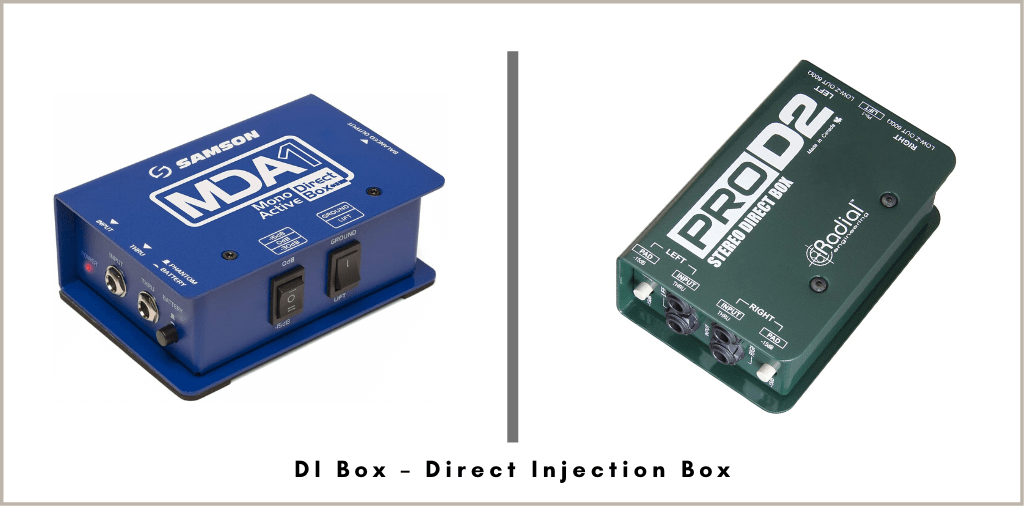
A direct injection box or DI box for short has the primary function of taking an unbalanced signal with a high-impedance and convert it to a low-impedance or balanced signal.
This enables you to connect a guitar or bass directly into the microphone preamplifier of a mixer or send a signal over long cable runs without losing volume and the high-frequency information in the signal.
Cables
If your cables come with your all in one system, you’re set, but what if you need to get your own? Let’s take a glance at the different cables you may hear mentioned when it comes to public address system components.
- XLR – this is usually used for connecting microphones to the mixing console, but can also be used for connecting different components together, for example, for connecting the audio mixer to an active speaker, or between the mixer and the amplifier. XLRs are also used to connect effects, equalizers, and several other audio components. The signal that travels through an XLR is balanced, meaning that it’s less susceptible to picking up noise.
- Jack – these are what you’ll plug instruments in with, along with a few other pieces, but while XLR offers balanced signal, jack cables do not.
- Speakon – these are insulated cables that offer a tighter connection and help prevent damage or shortage issues.
- RCA – these are used for inputs or output, and are usually found on mixers. RCA connectors are becoming obsolete and not used as much as they used to. Still, analog mixers offer a few channels with this type of connector.
Public Address System Block Diagram
The images below are for your reference. Here I include a couple of PA system block diagrams one for active and the other for passive PA systems. They can help you visualize the signal flow in both setups.
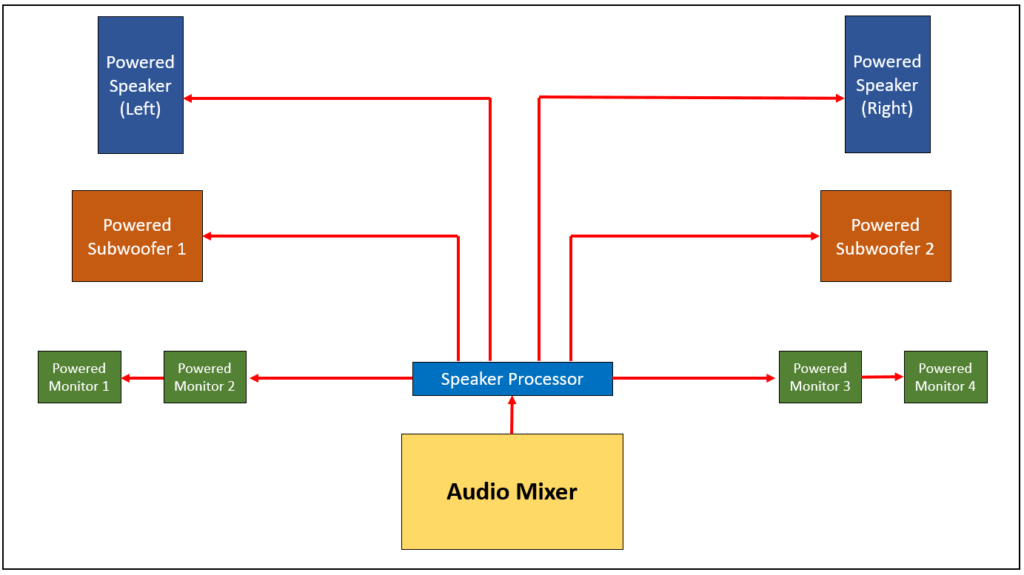
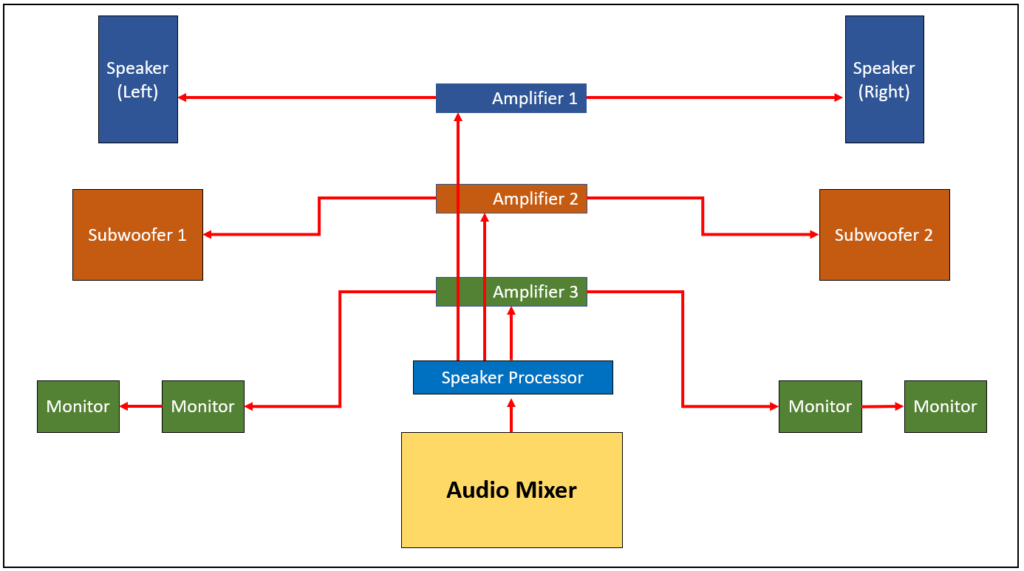
Public Address System Wiring Diagram
The following images are PA system wiring diagrams for active and passive systems. You can use them for your reference.
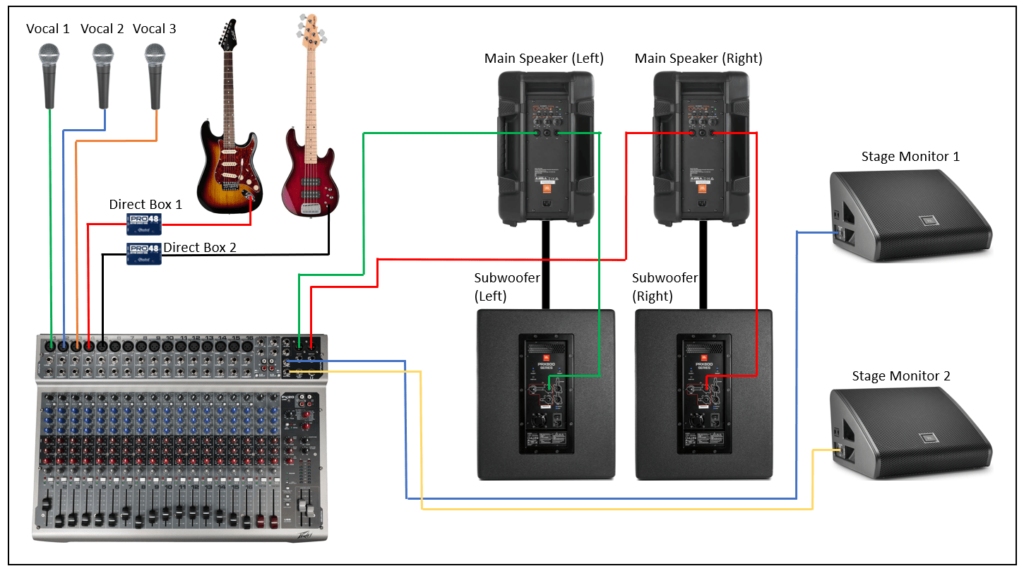
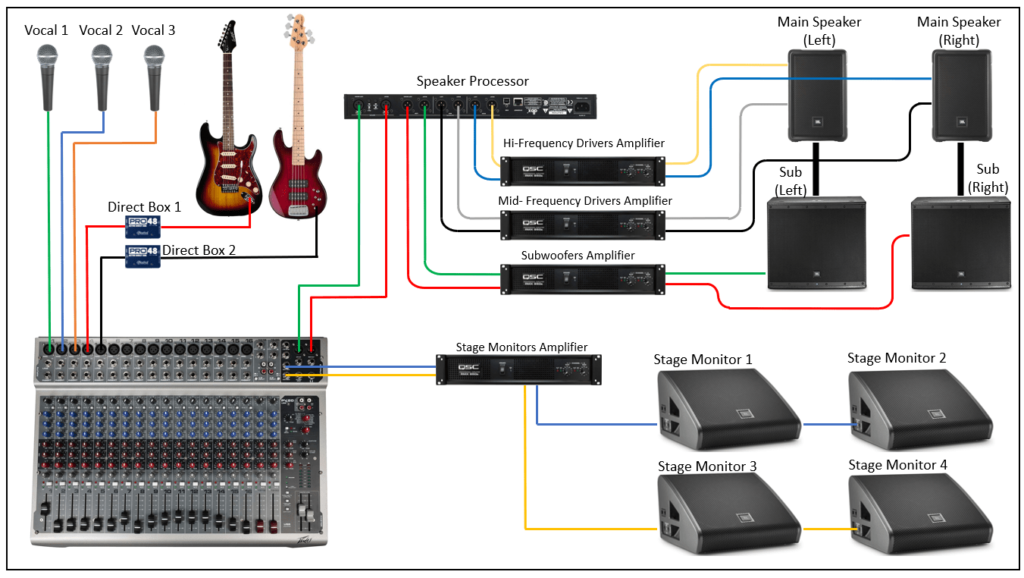
Takeaway
As seen in the article there are different types of systems, components, and details you’ll want to consider when choosing a PA system. You can choose from all in one PA systems, modular PA systems, and traditional systems.
Remember that each component that makes up a public address system plays a role in how the PA system works. And depending on which component you choose, the performance will be different.